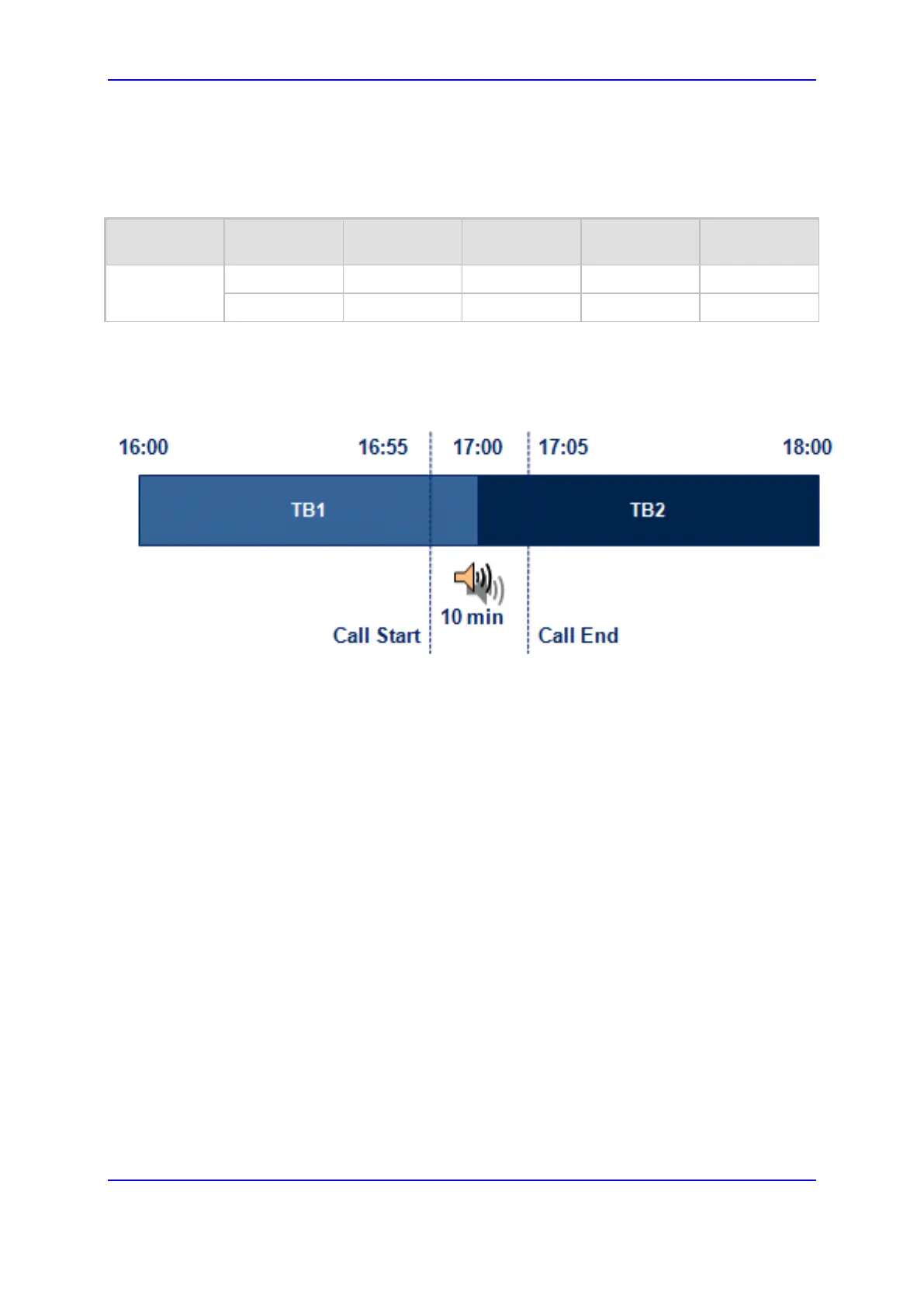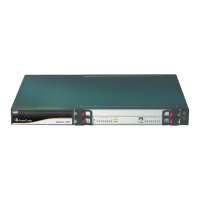Version 7.0 275 Mediant 3000
User's Manual 16. Services
• Index 4 - Cost Group "B" is only second-matched rule (Index 1 is the first)
Example 3: This example shows how the cost of a call is calculated if the call spans
over multiple time bands:
Assume a Cost Group, "CG Local" is configured with two time bands, as shown below:
Cost Group Time Band Start Time End Time
Connection
Cost
Minute Cost
CG Local
TB1 16:00 17:00 2 1
TB2 17:00 18:00 7 2
Assume that the call duration is 10 minutes, occurring between 16:55 and 17:05. In
other words, the first 5 minutes occurs in time band "TB1" and the next 5 minutes
occurs in "TB2", as shown below:
Figure 16-26: LCR using Multiple Time Bands (Example)
The device calculates the call using the time band in which the call was initially
established, regardless of whether the call spans over additional time bands:
Total call cost = "TB1" Connection Cost + ("TB1" Minute Cost x call duration) = 2 + 1
x 10 min = 12
16.4.2 Configuring LCR
To configure LCR, perform the following main steps:
1. Enable LCR - see Configuring a Gateway Routing Policy Rule on page 510 (for
Gateway) and Configuring SBC Routing Policy Rules on page 616 (for SBC).
2. Configure Cost Groups - see ''Configuring Cost Groups'' on page 275.
3. Configure Time Bands for a Cost Group - see ''Configuring Time Bands for Cost
Groups'' on page 276.
4. Assign Cost Groups to outbound IP routing rules - see ''Assigning Cost Groups to
Routing Rules'' on page 278.
16.4.2.1 Configuring Cost Groups
The Cost Group table lets you configure Cost Groups. A Cost Group defines a fixed call
connection cost and a call rate (charge per minute). Once configured, you can configure
Time Bands per Cost Group. Up to 10 Cost Groups can be configured.
The following procedure describes how to configure Cost Groups through the Web
interface. You can also configure it through ini file (CostGroupTable).

